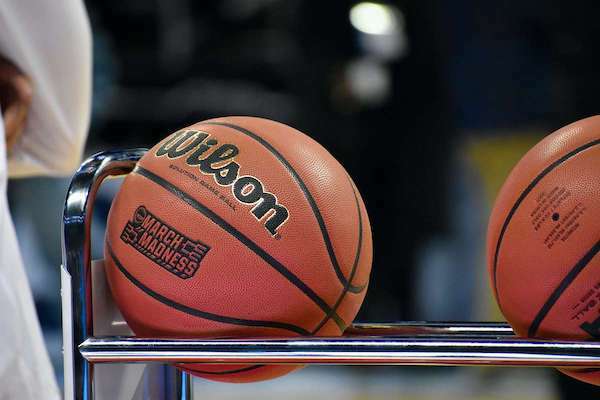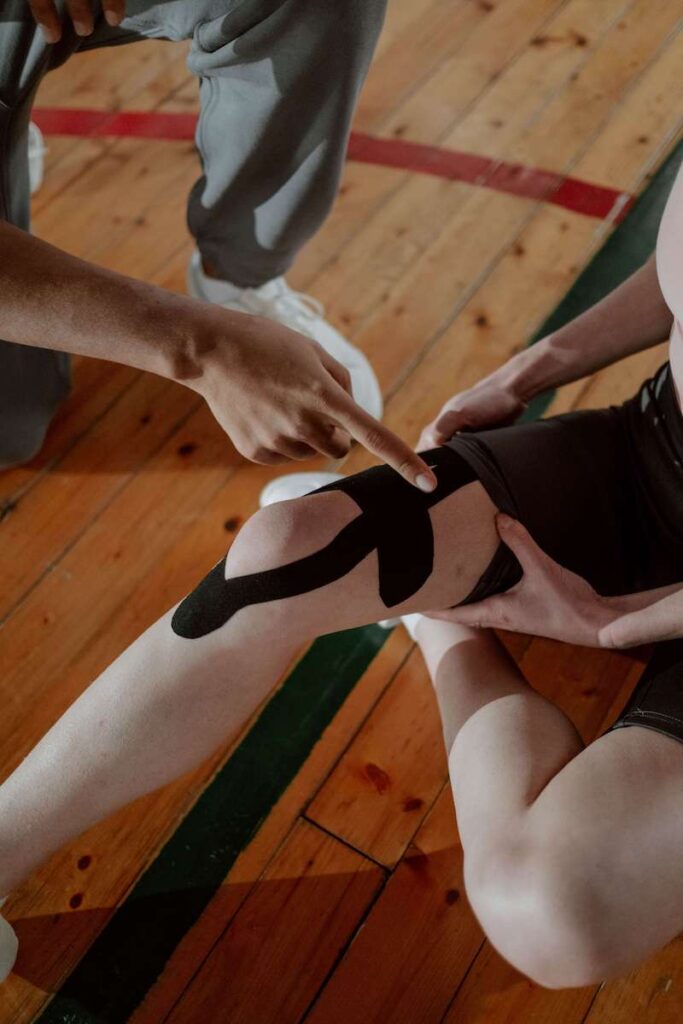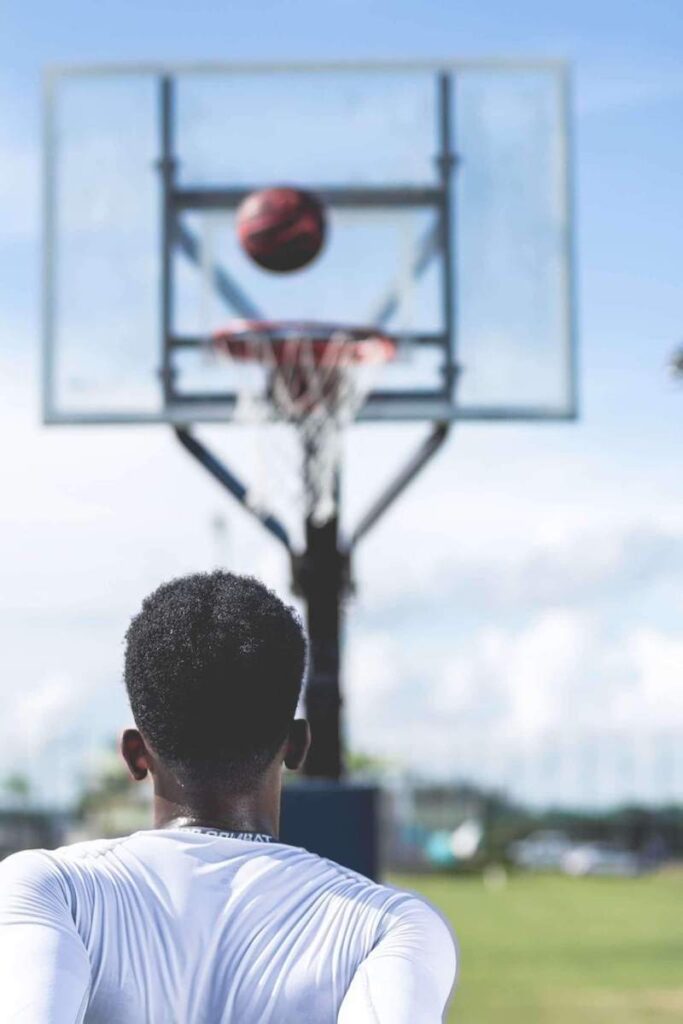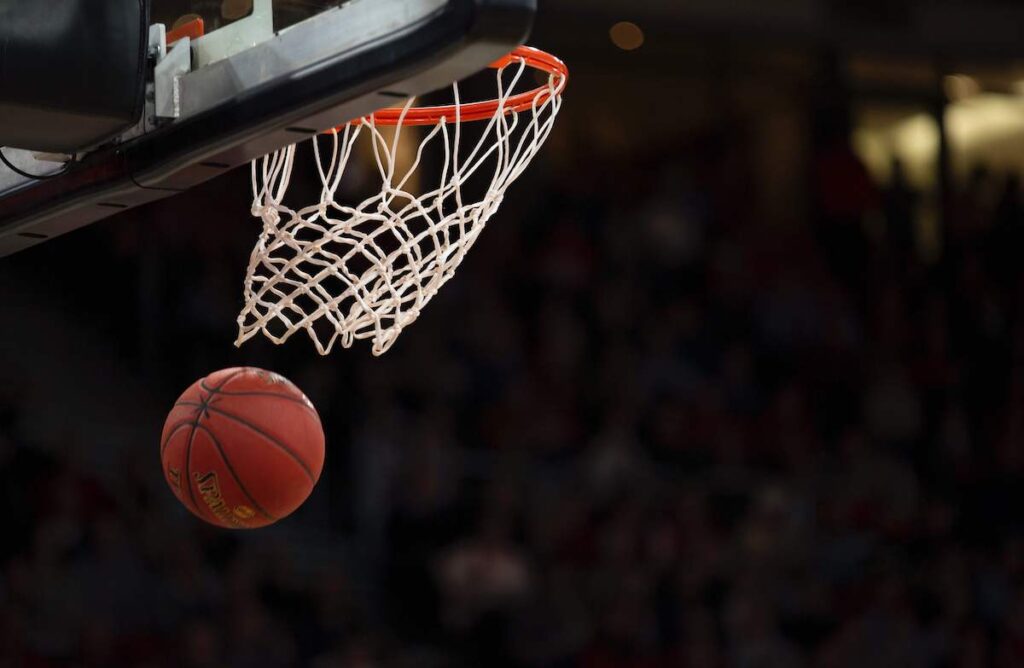Η καλαθοσφαίριση είναι ένα σκληρό άθλημα που ενέχει κίνδυνο τραυματισμού, ακόμα και για τον επαγγελματία καλαθοσφαιριστή. Οι τραυματισμοί στο μπάσκετ είναι συχνοί, και μπορούν εύκολα να στείλουν ένα αθλητή στις κερκίδες ή τα αποδυτήρια είτε παροδικά είτε, ακόμα χειρότερα, για μια ολόκληρη σεζόν. Το παιχνίδι περιλαμβάνει μια σειρά από κινήσεις (τρέξιμο, άλματα, απότομη αλλαγή κατεύθυνσης), που σε συνδυασμό με την συνεχή σωματική επαφή με τον αντίπαλο καθιστούν τον παίκτη ευάλωτο σε ποικιλία κακώσεων.
Table of contents


Ankle Injuries
Ankle injuries are probably the most common injury in basketball, representing 21.9% of all basketball injuries. Incidence varies from 3.8-5.2 injuries per 1000 exposures. Ankle injuries in basketball can be severe and difficult to recover from. They may also lead to chronic residual problems, like persistent pain or ankle instability, that can easily compromise a timely return to play.
Ankle Sprains
Ankle sprains may result from rebounding, general play, defending or shooting. Most sprains in basketball are lateral ankle sprains (approximately 80%).4 They occur because of excessive ankle inversion, which puts stress to the anterior talofibular ligament (ATFL), calcaneofibular (CFL), and posterior talofibular ligament (PTFL). Most injuries can be treated conservatively, with the RICE protocol (rest, ice, compression, elevation), especially in the first 24-48 hours, to avoid excessive swelling and reduce pain. Wrapping or bracing can also help. The injured athlete can use crutches initially and transition to a walking boot in 1-2 weeks if pain allows. Physiotherapy, with proprioceptive training, strengthening and closed chain exercises may start 2-3 weeks after the injury.
Medial ankle sprains are much less common and are caused by excess eversion and dorsiflexion. They involve the deltoid ligament. They are similarly treated nonoperatively, but deltoid reconstruction may be needed if instability ensues. High ankle sprains or syndesmotic injuries can also occur in basketball, typically after forceful external rotation of the plantar-flexed foot. These injuries are more severe, and typically require surgery.3
Ankle Fractures
Acute ankle fractures are relatively uncommon in basketball (0.5%). Lateral fibular fractures below the level of the syndesmosis (Weber A fractures) are usually stable and can be treated in a boot, with return to play at about 8 weeks. Lateral fibular fractures at the level of the syndesmosis (Weber B fractures) are potentially more severe and may require surgery if unstable. Ankle fractures above the level of the syndesmosis (Weber C fractures) are the most severe type and are more likely to require surgical intervention.
Achilles Tendonitis & Achilles Rupture
Basketball poses a continuous stress to the Achilles tendon, with microtears that can lead to chronic inflammation and pain. Achilles tendonitis can be both insertional and non-insertional. Achilles rupture is rare, but can be rather problematic for the athlete, requiring 6-9 months prior to return to play. The mechanism involves a forced dorsiflexion of the ankle with concomitant gastrocnemius contraction. Most Achilles ruptures in professional athletes get surgical repair.
Knee Injuries
Not surprisingly, knee injuries are also very common in basketball. These can be either acute injuries, or chronic overuse problems. ACL tears are the most common acute knee injury, with rates being higher in women players. Return to play varies after ACL reconstruction. A study among NBA players found that 22% of players did not return to play, whereas 44% had decreased overall performance after their return.
Overuse problems in the knee are typically related to patellar tendinitis, the so called jumper’s knee. Proper warm-up, cool-down and muscle training are fundamental to prevent these problems.


Jammed Fingers
Οι κακώσεις των δακτύλων και του αντίχειρα είναι εξαιρετικά συχνοί στο μπάσκετ. Οι κακώσεις αυτές μπορεί να αφορούν είτε την εγγύς (PIP) είτε την άπω (DIP) φαλαγγική άρθρωση, μπορεί να αφορούν τον θύλακο, τους συνδέσμους, ή να συνοδεύονται από ενδαρθρικά κατάγματα. Είναι σύνηθες σενάριο η μπάλα να χτυπάει τα ακροδάκτυλα, προκαλώντας βλάβη είτε στους εκτείνοντες (mallet finger) είτε στους καμπτήρες (Jersey finger), με ή χωρίς οστική συμμετοχή.
A mallet finger typically occurs with forced flexion of an actively extended DIP joint, when the ball jams on the fingertip. If the injury is stable, it can be splinted in extension and the player can return to play with their splint on. An unstable bony mallet needs surgery, with wiring. Metacarpal fractures are also common during dunks or fouls. Dunking lacerations (cuts) are also possible.8
Stress Fractures
Stress fractures in basketball may involve the foot metacarpals, anterior tibia, talus or the navicular bone. These can also go misdiagnosed for a long time. Upon suspicion, even in the presence of a negative x-ray, an MRI is warranted to confirm the diagnosis. Treatment involves unloading with crutches and progressing weight-bearing in a walking boot. Basketball players can also get a Jones fracture, which is a fracture of the base of the 5th metatarsal. These usually heal on their own, but surgery may still be warranted in an elite athlete to accelerate return to play.
Concussion
Concussions can occur in basketball after contact with another player or an impact to the court flour. A player with concussion may experience nausea, blurred vision, dizziness, and headache. A concussion should not be taken lightly. Even a reportedly mild case should be examined properly by the team physician.
Eye Injuries
Common eye injuries in basketball include corneal abrasions and eyelid lacerations. Most of these injuries occur during rebounds. Protective goggles and eye-shields can help prevent these injuries.10
Other Injuries
Μυϊκές θλάσεις στον μηρό, τραύματα στο πρόσωπο και οδοντικές κακώσεις συμβαίνουν επίσης πολύ συχνά στους αθλητές του basket.
References
1. Andreoli CV, Chiaramonti BC, Buriel E, Pochini AC, Ejnisman B, Cohen M: Epidemiology of sports injuries in basketball: integrative systematic review. BMJ Open Sport Exerc Med 2018;4:e000468.
2. Fong DT, Hong Y, Chan LK, Yung PS, Chan KM: A systematic review on ankle injury and ankle sprain in sports. Sports Med 2007;37:73-94.
3. Moore ML, Haglin JM, Hassebrock JD, Anastasi MB, Chhabra A: Management of ankle injuries in professional basketball players: Prevalence and rehabilitation. Orthop Rev (Pavia) 2021;13:9108.
4. Herzog MM, Mack CD, Dreyer NA, Wikstrom EA, Padua DA, Kocher MS, et al.: Ankle Sprains in the National Basketball Association, 2013-2014 Through 2016-2017. Am J Sports Med 2019;47:2651-2658.
5. Drakos MC, Domb B, Starkey C, Callahan L, Allen AA: Injury in the national basketball association: a 17-year overview. Sports Health 2010;2:284-290.
6. Pedowitz D, Kirwan G: Achilles tendon ruptures. Curr Rev Musculoskelet Med 2013;6:285-293.
7. Busfield BT, Kharrazi FD, Starkey C, Lombardo SJ, Seegmiller J: Performance outcomes of anterior cruciate ligament reconstruction in the National Basketball Association. Arthroscopy 2009;25:825-830.
8. Trojian TH, Cracco A, Hall M, Mascaro M, Aerni G, Ragle R: Basketball injuries: caring for a basketball team. Curr Sports Med Rep 2013;12:321-328.
9. Kennedy JG, Johnson SM, Collins AL, DalloVedova P, McManus WF, Hynes DM, et al.: An evaluation of the Weber classification of ankle fractures. Injury 1998;29:577-580.
10. Go JA, Lin SY, Williams KJ, Tran J, Sweeney AR, Foroozan R, et al.: Eye Injuries in the National Basketball Association. Ophthalmology 2020;127:696-697.
Frequently Asked Questions
Which are the most common basketball injuries?
– Ankle sprains.
– Finger injuries (ie, mallet finger, fractures, dislocations).
– Knee injuries (ACL) & overuse syndromes (jumper’s knee).
Find us
Book an appointment with us today

